Pulmonary Tuberculosis in the 19th Century: A Historical Case Study of Dr. Șerban Eminovici, Romanian Physician and Brother of Poet Mihai Eminescu
Abstract
1. Introduction
2. Archival Sources and Methodology
- (1)
- University registers and matriculation books from the Universities of Erlangen, Munich, Vienna, and Berlin;
- (2)
- Hospital admission and death records from the Charité Hospital in Berlin (courtesy of Navena Widulin from the Berlin Museum of Medical History at the Charité)
- (3)
- Personal and diplomatic correspondence preserved at the Romanian National Archives and the Memorial Ipotești—National Centre for Mihai Eminescu Studies.
3. Background, Mortality Patterns, and Health Context in the Eminovici Family
4. Educational Trajectory and Medical Training of Dr. Șerban Eminovici
5. Early Signs of Illness and Sanatorium Treatments in the Habsburg Empire
6. Final Stage of Illness and Hospitalization at the Charité, Berlin
7. Comparative Context of Tuberculosis Treatment in 19th-Century Europe
8. Conclusions
Author Contributions
Funding
Institutional Review Board Statement
Informed Consent Statement
Data Availability Statement
Conflicts of Interest
References
- Frith, J. History of Tuberculosis. Part 2—The Sanatoria and the Discoveries of the Tubercle Bacillus. J. Mil. Veterans Health 2014, 22, 36–41. [Google Scholar]
- Parekh, N.; Rose, M.; Parekh, V.; Hughes, M. Tuberculosis in Europe. BMJ 2010, 341, c5156. [Google Scholar] [CrossRef]
- Martini, M.; Gazzaniga, V.; Behzadifar, M.; Bragazzi, N.L.; Barberis, I. The History of Tuberculosis: The Social Role of Sanatoria for the Treatment of Tuberculosis in Italy between the End of the 19th Century and the Middle of the 20th. J. Prev. Med. Hyg. 2018, 59, E323–E327. [Google Scholar] [CrossRef] [PubMed]
- Călinescu, G. Viața Lui Mihai Eminescu, Ediția a III-a; Editura “Cartea Românească”: București, Romania, 1935. [Google Scholar]
- Petrescu, C. Romanul Lui Eminescu, Volumul I; Naționala Ciornei: București, Romania, 1940. [Google Scholar]
- Nica, I. Eminescu. Structura Somato-Psihică; Editura Eminescu: București, România, 1972. [Google Scholar]
- Crețu, I. Mihai Eminescu. Bibliografie Documentară; Editura pentru Literatură: București, România, 1968. [Google Scholar]
- Pop, A.Z.N. Contribuţii Documentare la Bibliografia Lui Mihai Eminescu; Editura Academiei: București, România, 1962; Volume 1. [Google Scholar]
- Dulciu, D.T. Șerban Eminovici La Gleichenberg În 1865. Gracious Light 2021, 26, 49–66. [Google Scholar]
- Dulciu, D.T. Eminescu La Berlin: Coordonate Biografice În Repere Topografice. 2019. Available online: https://www.academia.edu/41149926/Eminescu_la_Berlin (accessed on 20 October 2025).
- Dulciu, D.T.; Date Noi Despre Șerban Eminescu. Revista Floare Albastră. 2020. Available online: https://revistafloarealbastraccsvaratic.wordpress.com/2020/11/05/dan-toma-dulciu-date-noi-despre-serban-eminescu/ (accessed on 20 October 2025).
- Plătareanu, V.M. “Medicii Șerban Și Ilie Eminovici (Frații Poetului Eminescu).” Mișcarea Medicală Română. Acta Medica Romana 1940, 13, 419–425. [Google Scholar]
- Neghina, R.; Neghina, A.M. Medical Controversies and Dilemmas in Discussions about the Illness and Death of Mihai Eminescu (1850–1889), Romania’s National Poet. Med. Probl. Perform. Art. 2011, 26, 44–50. [Google Scholar] [CrossRef] [PubMed]
- Pîrvu, B.C.S.; Stroe, M.A.; Nagy, R. Towards a Linguistic Patho-Chronology: Dating Poetry Using a Language-and-Mind Approach (Case Study: Mihai Eminescu). Rev. Roum. Linguist. 2016, 61, 361–377. [Google Scholar]
- Bengtsson, T. Mortality: The Great Historical Decline. In International Encyclopedia of the Social & Behavioral Sciences; Elsevier: Oxford, UK, 2001. [Google Scholar]
- Rossi, F. La Mortalità in Alcuni “Länder” Dell’Impero Austriaco a Metà Ottocento. Pop. E Stor. 2017, 18, 27–52. Available online: https://popolazioneestoria.it/article/view/849 (accessed on 20 October 2025).
- Patrascu, R.E.; Cucu, A.I.; Costea, C.F.; Cosman, M.; Blaj, L.A.; Hristea, A. Brain Tuberculosis: An Odyssey through Time to Understand This Pathology. Pathogens 2023, 12, 1026. [Google Scholar] [CrossRef] [PubMed]
- Barberis, I.; Bragazzi, N.L.; Galluzzo, L.; Martini, M. The history of tuberculosis: From the first historical records to the isolation of Koch’s bacillus. J. Prev. Med. Hyg. 2017, 58, E9–E12. [Google Scholar] [PubMed] [PubMed Central]
- Ciucă, M.-D. Mihai Eminescu În Documentele de Arhivă. Bucharest: Editura Ministerului de Interne; Editura Ministerului Afacerilor Interne: Bucharest, Romania, 2001; ISBN 973-9265-90-1. [Google Scholar]
- Bucovu, I.-I. Eminescu La Cernăuți; Națiunea: București, Romania, 2017. [Google Scholar]
- Eminescu, M. Memoriu Asupra Familiei Eminescu (Comunicare Făcută d-Lui Corneliu Botez). Junimea Lit. Anul VI (No. 7–8) 1909, 142–145. [Google Scholar]
- Brusselle, A.G.; Leopold, G.; Blumauer, F.; Bartussek, A. Zur Geschichte von Bad Gleichenberg. In Kurorte- und Heilquellenkunde; Scheminzky, F., Ed.; Springer Vienna: Vienna, Austria, 1950; pp. 1–16. ISBN 978-3-211-80153-6. [Google Scholar]
- Lempa, H. The Spa: Emotional Economy and Social Classes in Nineteenth-Century Pyrmont. Cent. Eur. Hist. 2002, 35, 37–73. [Google Scholar] [CrossRef] [PubMed]
- Warren, P. The Evolution of the Sanatorium: The First Half-Century, 1854–1904. Can. Bull. Med. Hist. 2006, 23, 457–476. [Google Scholar] [CrossRef] [PubMed]
- Fleßner, A.B. Tuberkulosebekämpfung im Bezirk der Landesversicherungsanstalt Oldenburg-Bremen in der NS- und in der Besatzungszeit. Sozialer Fortschr. 2019, 68, 163–174. [Google Scholar] [CrossRef]
- Gastmeier, P. 300 Jahre Infektionsprävention an der Charité. DMW—Dtsch. Med. Wochenschr. 2010, 135, 1137–1140. [Google Scholar] [CrossRef] [PubMed]
- Windholz, G. Psychiatric Treatment and the Condition of the Mentally Disturbed at Berlin’s Charité in the Early Decades of the Nineteenth Century. Hist. Psychiatry 1995, 6, 157–176. [Google Scholar] [CrossRef] [PubMed]
- Bonhoeffer, K. Die Geschichte der Psychiatrie in der Charité im 19. Jahrhundert. In Die Geschichte der Psychiatrie in der Charité im 19. Jahrhundert; Springer: Berlin/Heidelberg, Germany, 1940; pp. 1–28. ISBN 978-3-662-27540-5. [Google Scholar]
- Dormandy, T. The White Death: A History of Tuberculosis; The Hambledon: London, UK, 1999; ISBN 978-1-85285-169-9. [Google Scholar]
- Rothman, S.M. Living in the Shadow of Death: Tuberculosis and the Social Experience of Illness in American History; Johns Hopkins University Press: Baltimore, MD, USA, 1995; ISBN 978-0-8018-5186-5. [Google Scholar]
- Schmidt, J.M. The history of tuberculin therapy—Its discovery by Robert Koch, its forerunners and further development. Pneumologie 1991, 45, 776–784. [Google Scholar] [PubMed]
- Lister, J. Lecture on Koch’s Treatment of Tuberculosis. Br. Med. J. 1890, 2, 1372–1374. [Google Scholar] [CrossRef] [PubMed]
- Șoroagă, M.L. The Deadliest Disease Nobody Thinks about. Correlating Financial Incentives and Adherence to Treatment for Tuberculosis Patients. J. Comp. Res. Anthropol. Sociol. 2024, 15, 1–25. [Google Scholar] [CrossRef]
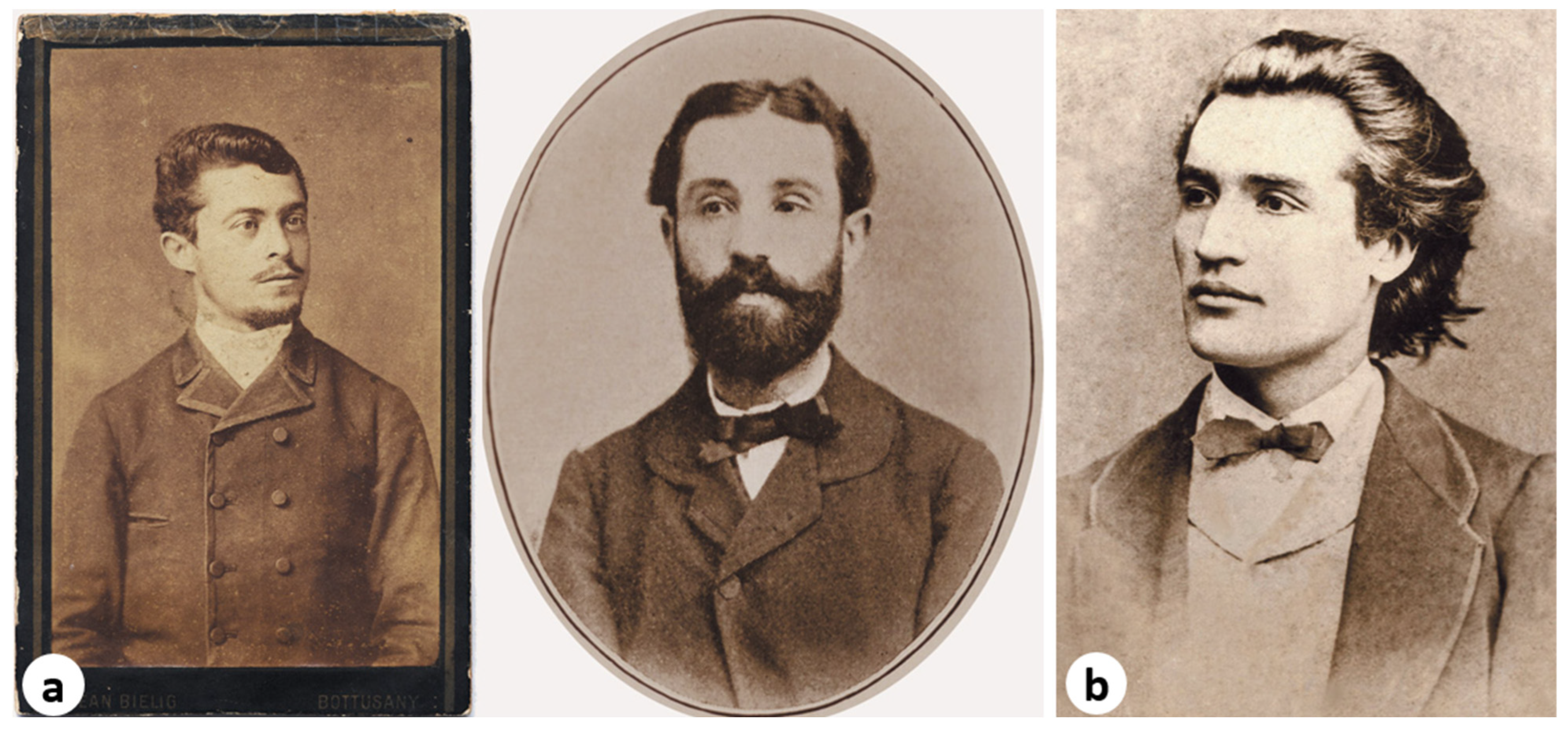
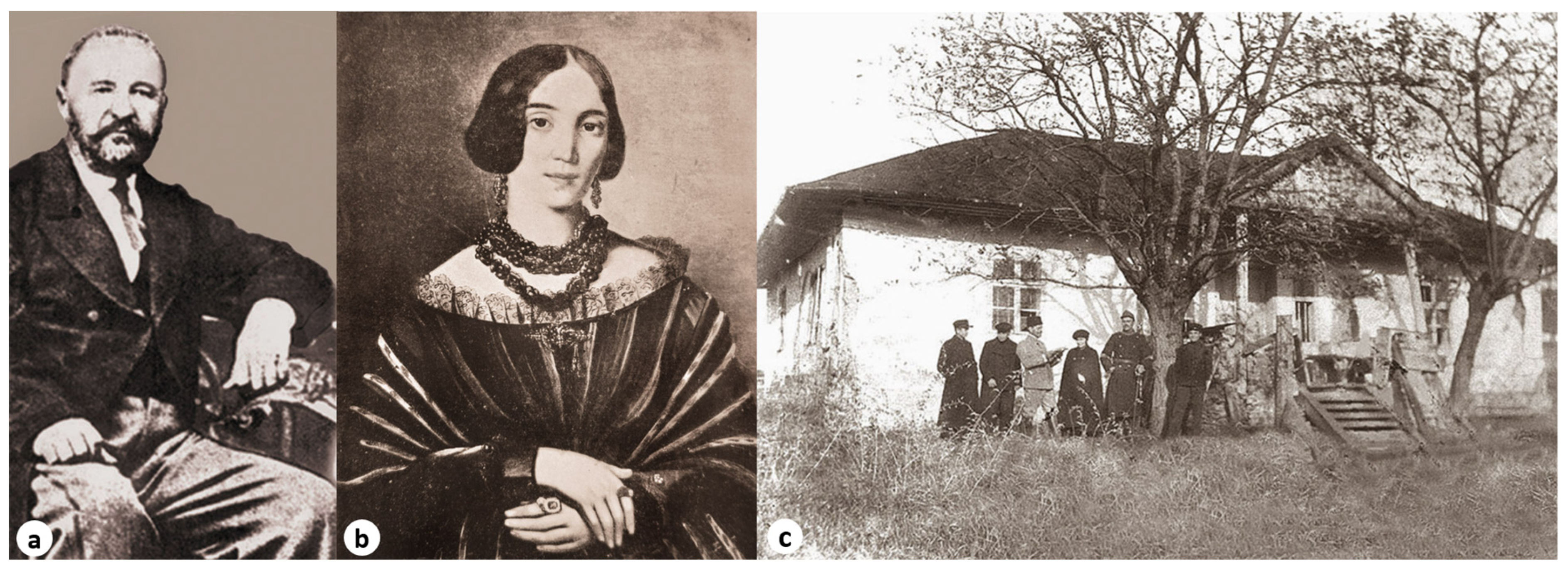


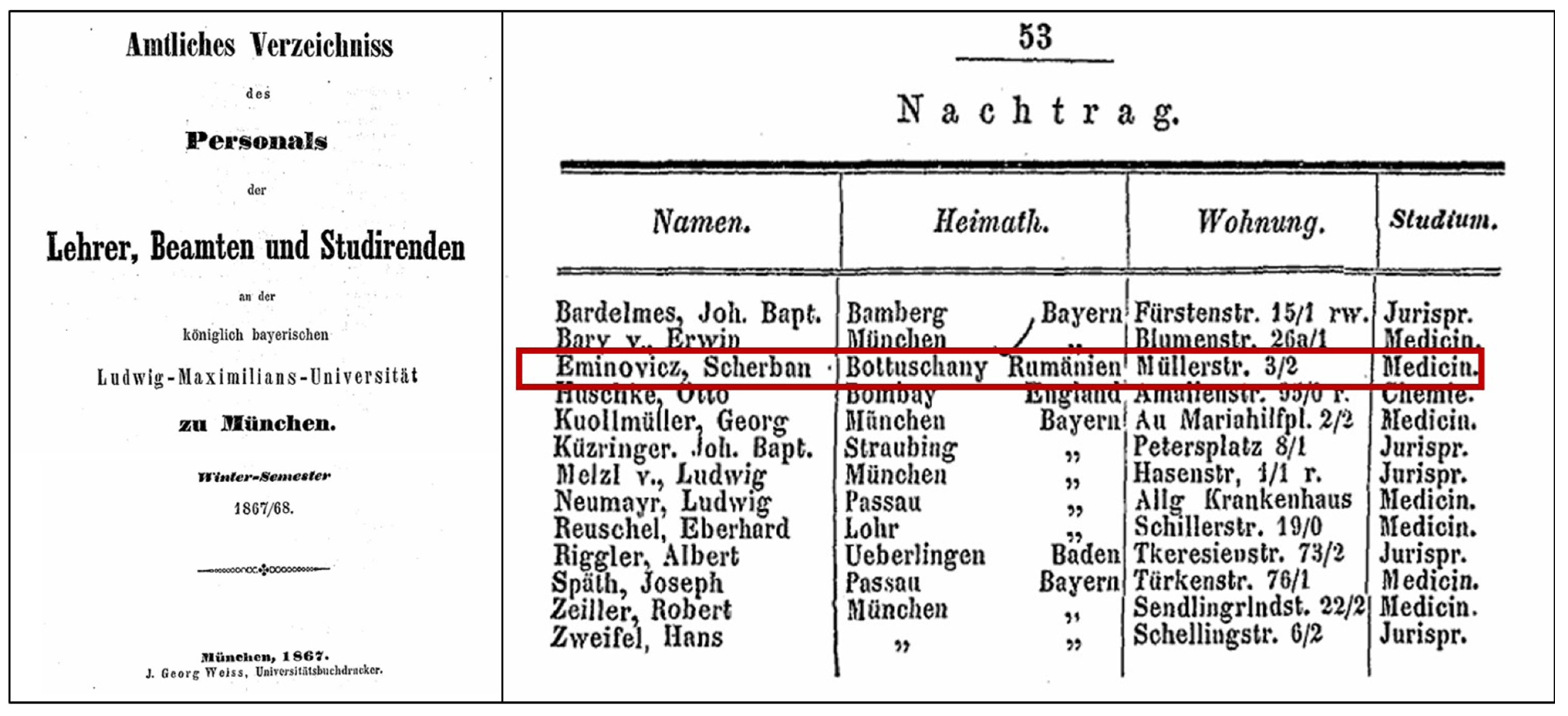
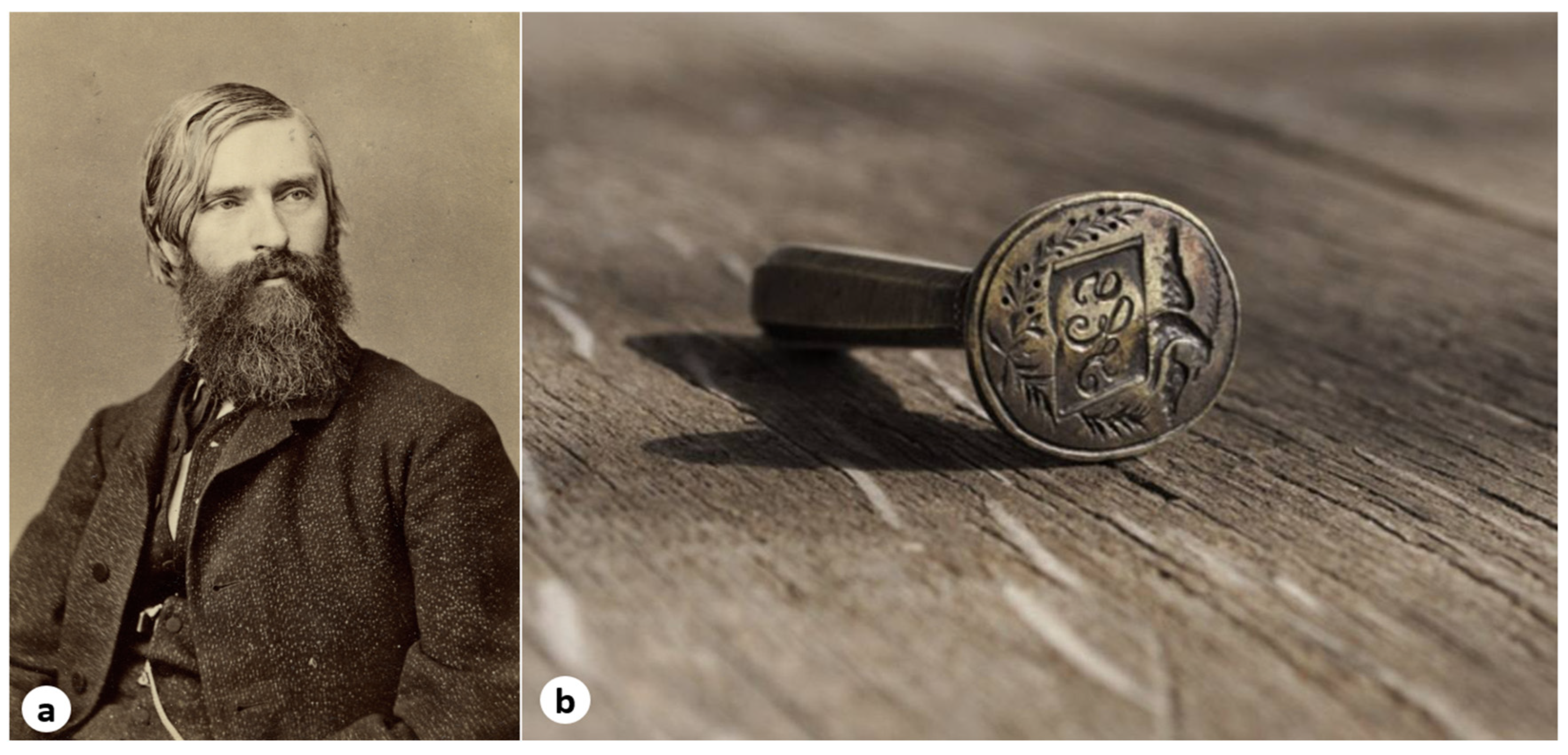
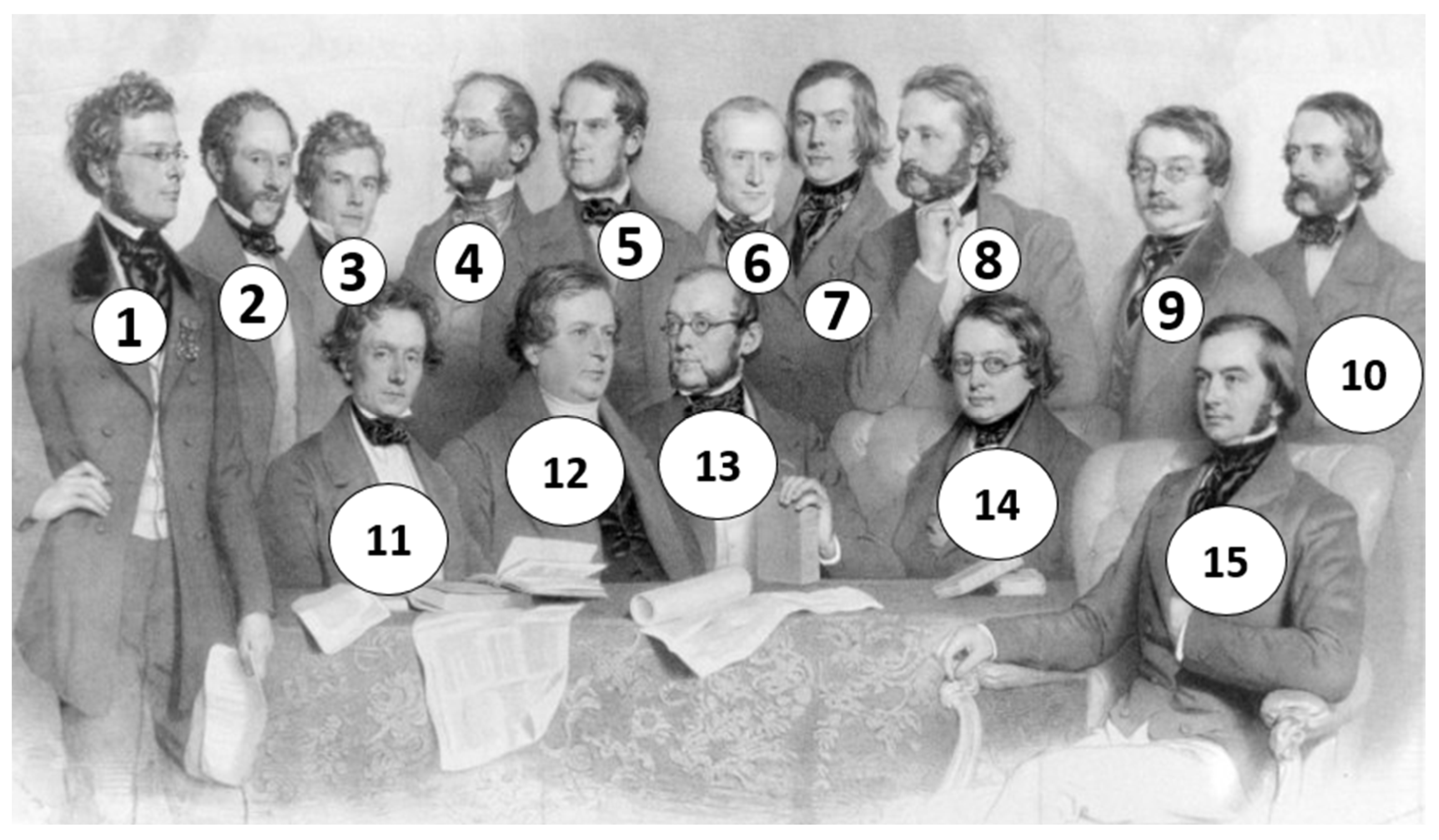
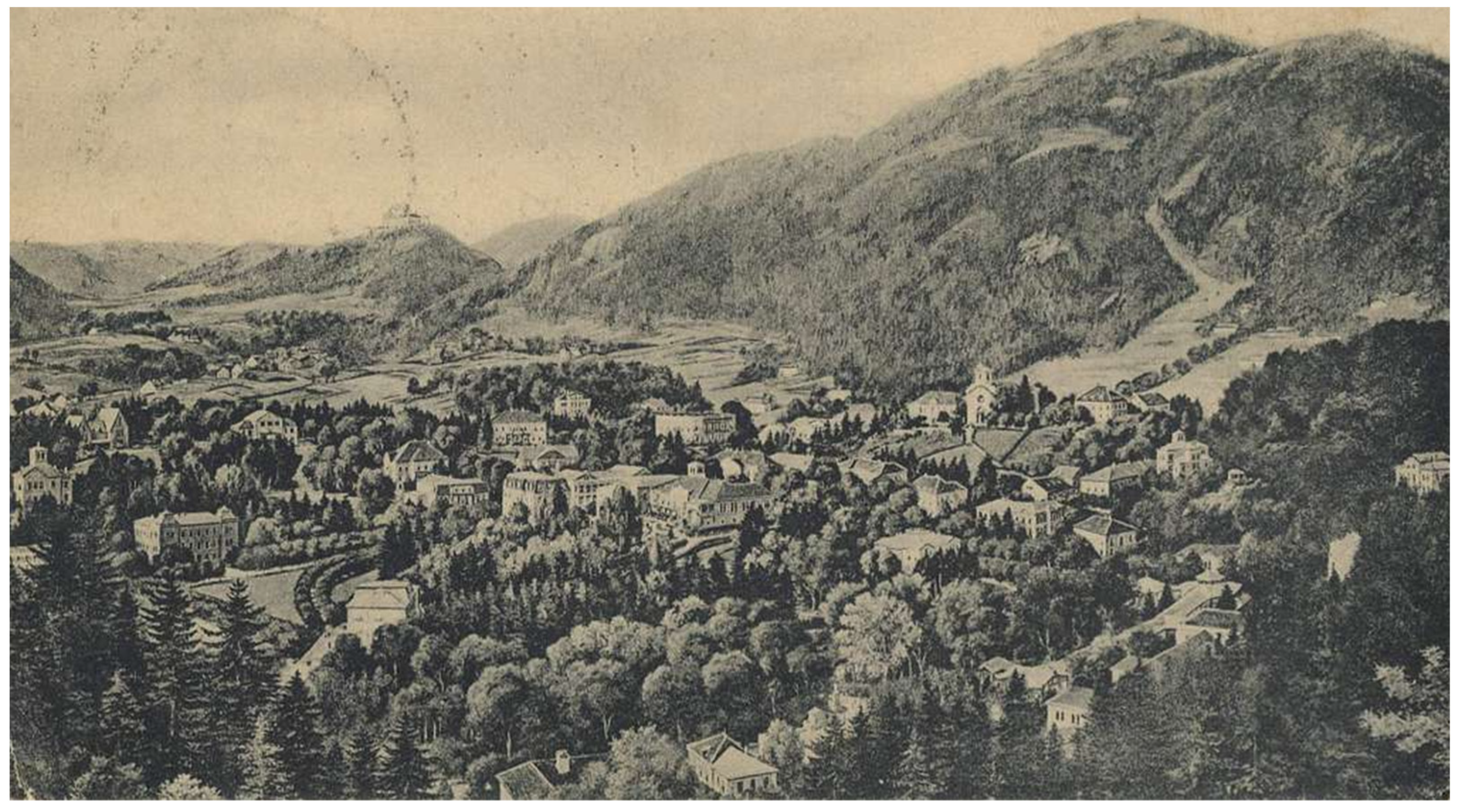
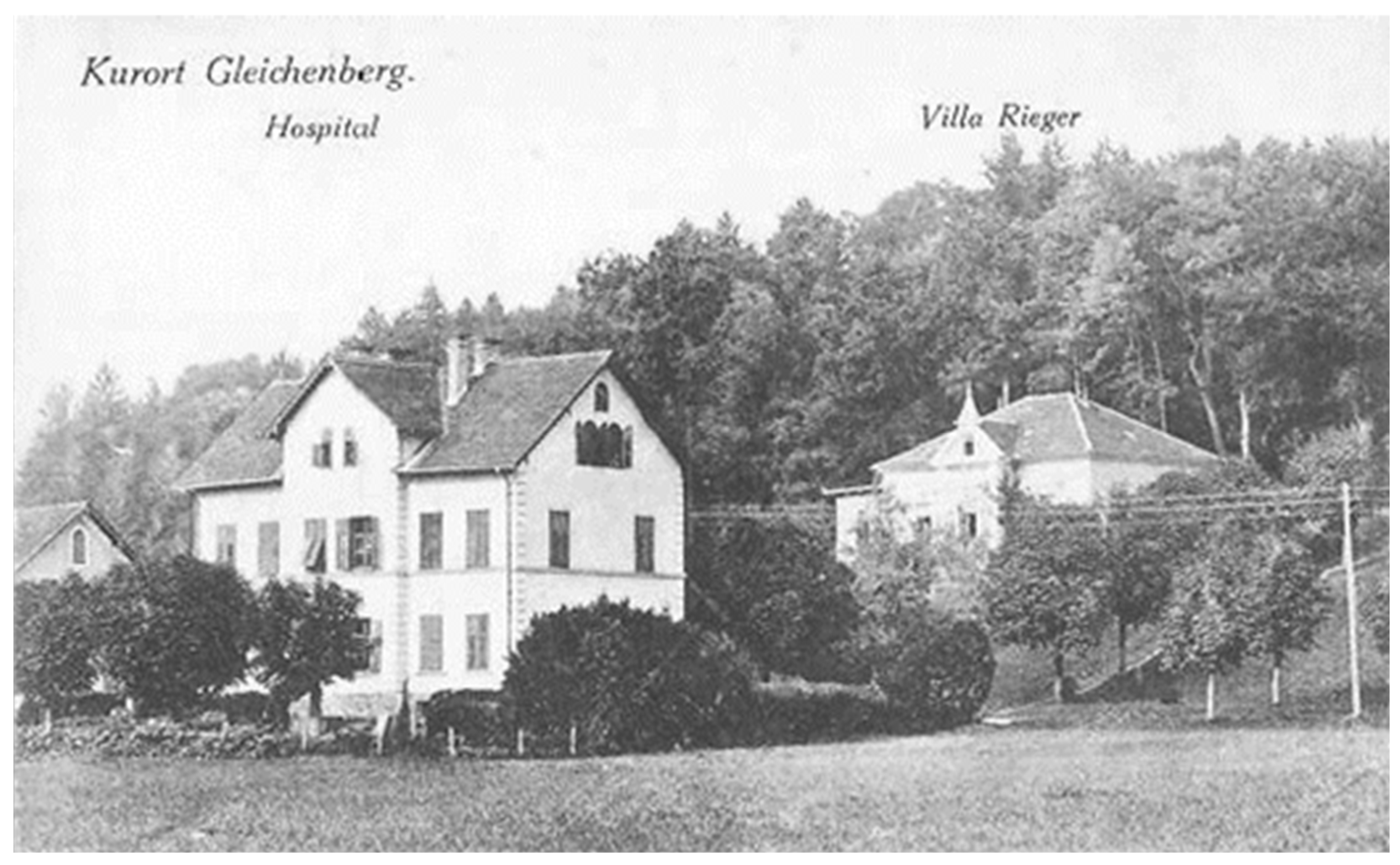
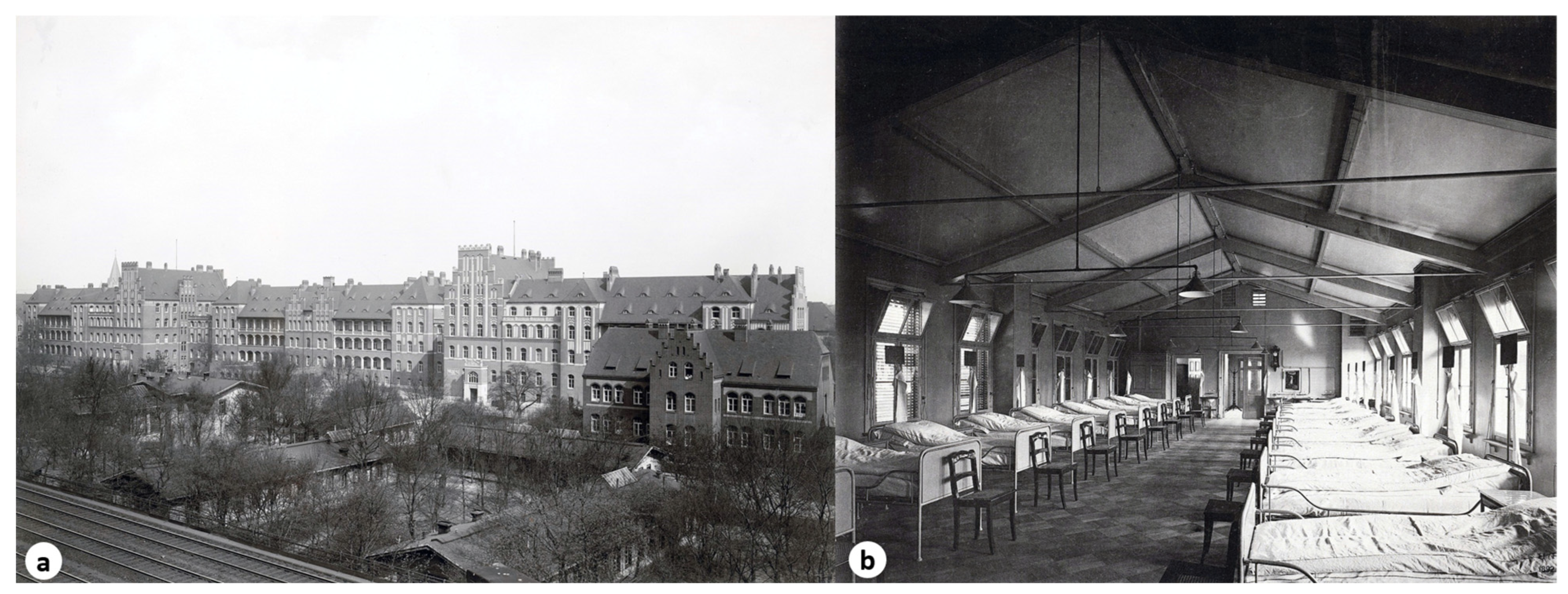

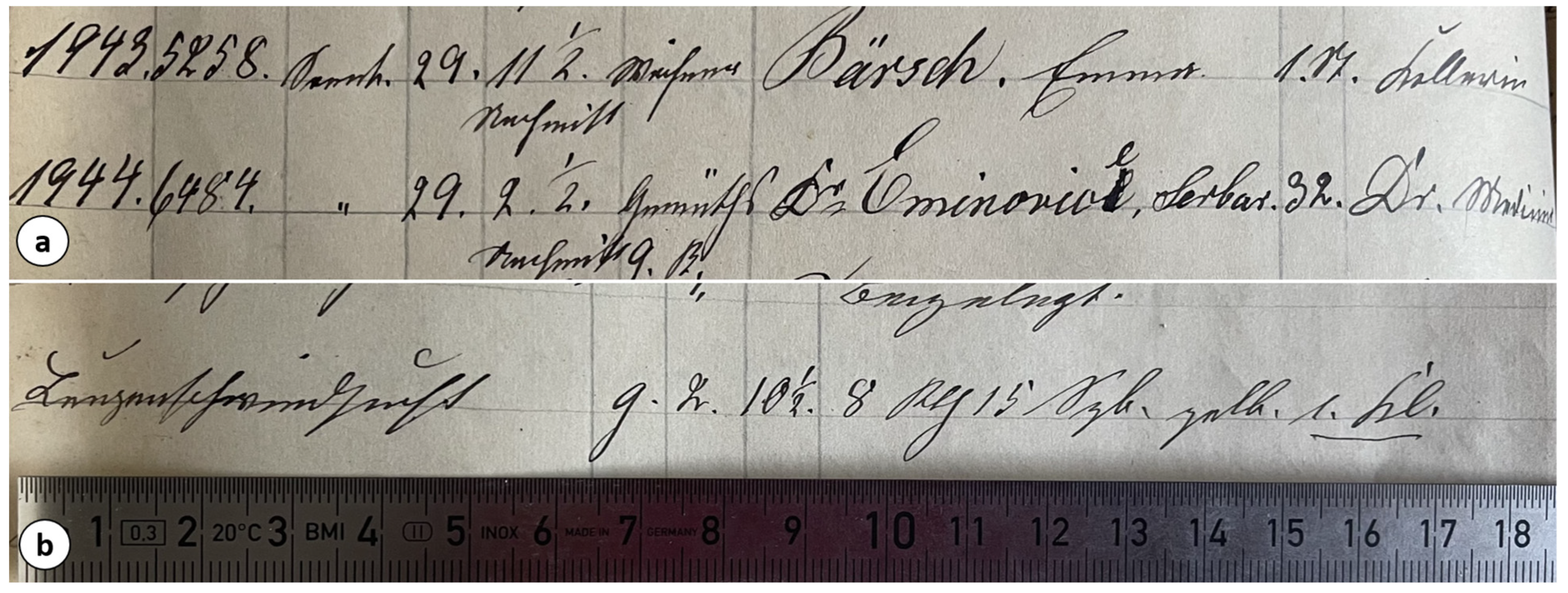
| No. | Name of Sibling | Year of Death | Age at Death (Years) | Reported Illness During Lifetime | Cause of Death |
|---|---|---|---|---|---|
| 1 | Ruxandra Eminovici | 1845 | <1 year | N/K | Unknown infant illness |
| 2 | Maria Eminovici | 1848 | 8 | N/K | Unknown infant illness |
| 3 | Vasile Eminovici | 1857 | 4 | N/K | Unknown infant illness |
| 4 | Ilie Eminovici | 1867 | 21 | — | Typhus |
| 5 | Iorgu Eminovici | 1873 | 29 | Mental disorder; Tuberculosis | Suicide (gunshot) |
| 6 | Șerban Eminovici | 1874 | 33 | Mental disorder; Tuberculosis | Pulmonary tuberculosis |
| 7 | Nicolae Eminovici | 1884 | 41 | Mental disorder | Suicide (gunshot) |
| 8 | Mihai Eminescu | 1889 | 39 | Mental disorder | Medical malpractice due to mercury poisoning (misdiagnosis of syphilis) |
| 9 | Harieta Eminovici | 1889 | 35 | Paraplegia (possible poliomyelitis); Tuberculosis | Cerebral stroke (apoplexy) |
| 10 | Aglaia Eminovici (Drogli) | 1900 | 48 | Tuberculosis | Pulmonary tuberculosis |
| 11 | Matei Eminovici | 1929 | 73 | Chronic pulmonary disease | Chronic pulmonary disease |
Disclaimer/Publisher’s Note: The statements, opinions and data contained in all publications are solely those of the individual author(s) and contributor(s) and not of MDPI and/or the editor(s). MDPI and/or the editor(s) disclaim responsibility for any injury to people or property resulting from any ideas, methods, instructions or products referred to in the content. |
© 2025 by the authors. Licensee MDPI, Basel, Switzerland. This article is an open access article distributed under the terms and conditions of the Creative Commons Attribution (CC BY) license (https://creativecommons.org/licenses/by/4.0/).
Share and Cite
Cucu, A.I.; Buzduga, C.M.; Widulin, N.; Nemtoi, A.; Bobu, A.M.; Costea, C.F.; Filip, R.; Porumb, V.; Morosan, A.P.; Carauleanu, A.; et al. Pulmonary Tuberculosis in the 19th Century: A Historical Case Study of Dr. Șerban Eminovici, Romanian Physician and Brother of Poet Mihai Eminescu. Pathogens 2025, 14, 1067. https://doi.org/10.3390/pathogens14101067
Cucu AI, Buzduga CM, Widulin N, Nemtoi A, Bobu AM, Costea CF, Filip R, Porumb V, Morosan AP, Carauleanu A, et al. Pulmonary Tuberculosis in the 19th Century: A Historical Case Study of Dr. Șerban Eminovici, Romanian Physician and Brother of Poet Mihai Eminescu. Pathogens. 2025; 14(10):1067. https://doi.org/10.3390/pathogens14101067
Chicago/Turabian StyleCucu, Andrei Ionut, Catalin M. Buzduga, Navena Widulin, Alexandru Nemtoi, Amelian Madalin Bobu, Claudia Florida Costea, Roxana Filip, Vlad Porumb, Anca Petruta Morosan, Alexandru Carauleanu, and et al. 2025. "Pulmonary Tuberculosis in the 19th Century: A Historical Case Study of Dr. Șerban Eminovici, Romanian Physician and Brother of Poet Mihai Eminescu" Pathogens 14, no. 10: 1067. https://doi.org/10.3390/pathogens14101067
APA StyleCucu, A. I., Buzduga, C. M., Widulin, N., Nemtoi, A., Bobu, A. M., Costea, C. F., Filip, R., Porumb, V., Morosan, A. P., Carauleanu, A., Sava, A., Porumb-Andrese, E., Patrascanu, E., Tamas, C., & Nerlich, A. G. (2025). Pulmonary Tuberculosis in the 19th Century: A Historical Case Study of Dr. Șerban Eminovici, Romanian Physician and Brother of Poet Mihai Eminescu. Pathogens, 14(10), 1067. https://doi.org/10.3390/pathogens14101067








